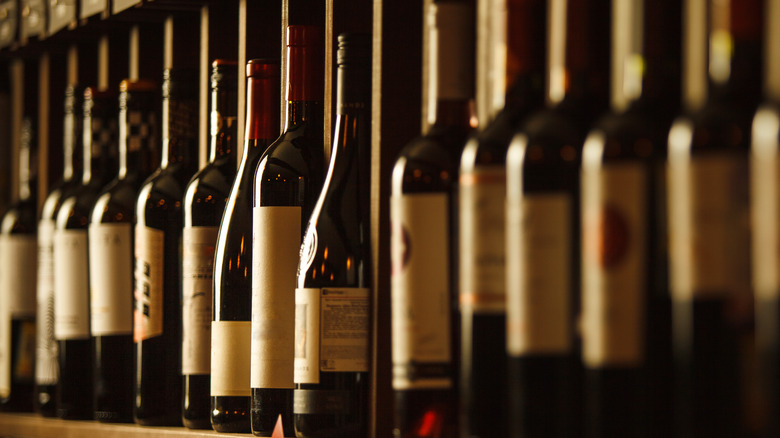Why You Shouldn't Believe The 'Second Cheapest Wine' Myth
Being tasked with choosing a wine during a night out can be a stressful endeavor — that is unless you're a sommelier. But for those of us whose wine knowledge isn't quite as rich as the professionals, there are some general rules we've come to accept. One of those is the 'second cheapest wine' principle — but is this a fact, or is it fiction?
According to Punch, the second cheapest wine principle is the idea that if you buy the second cheapest option, you'll get a great deal without looking "penny-pinchingly cheap." However, this widespread belief has led many to believe the second cheapest wine is actually the worst deal on the list, given its frequency of choice by customers. It's for this reason that many are conditioned to avoid the second cheapest wine like the plague.
First things first. Price markups are very real. In fact, Wine Enthusiast reports that prices that average up to three times higher than wholesale costs, which means that a bottle valued at $10 wholesale might sell for $15 retail, but $30 in a restaurant setting. That said, prices can fluctuate depending on the restaurant based on factors like state laws and taxes, wholesale costs, and operational costs in restaurants.
Markups aren't limited to the second cheapest wine
The truth is that the 'second cheapest wine' principle is actually a myth — at least, for the most part. Food & Wine reports that the findings of a study done by the American Association of Wine Economists, showed that the cheapest bottle is not in fact the biggest rip-off, rather the culprit lies somewhere in the middle of the list.
The case for high-priced bottles found mid-list actually makes a fair bit of sense. One of the study's co-authors, Dr. Vikram Pathania, explains that at the low end of the wine list, margins are kept down to encourage consumption, just like at the higher end where equally low margins encourage customers to upgrade to more expensive bottles (via Decanter). That means that the middle of the wine list is a fair place for sly markups to hide. After all, money must be made somewhere.
While there isn't truly a steadfast rule of which wines provide the best bang-for-your-buck, most insiders agree that quality restaurants want their patrons to enjoy quality wines. VinePair notes that sommeliers don't include affordable listings as some sort of trick, but rather because the bottles have a wow factor and act as a nudge to customers to try lesser-known wines. Are you ready to abandon the principle of 'second cheapest wine'?

